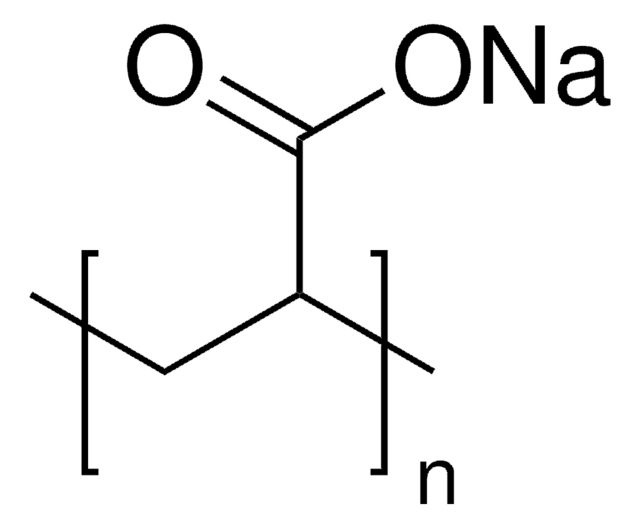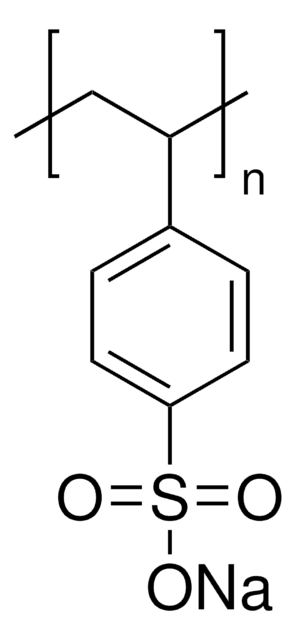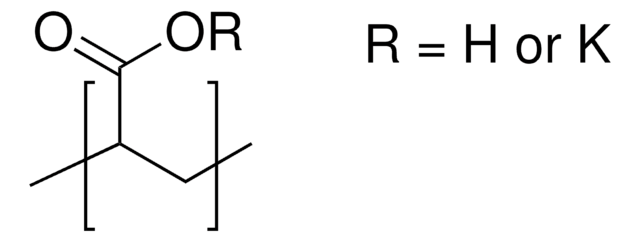420344
Poly(acrylic acid sodium salt)
average Mw ~2,100
Sinônimo(s):
Poly(sodium acrylate), Sodium polyacrylate
About This Item
Produtos recomendados
forma
powder
peso molecular
average Mw ~2,100
densidade
0.55 g/mL at 25 °C
InChI
1S/C3H4O2.Na/c1-2-3(4)5;/h2H,1H2,(H,4,5);/q;+1/p-1
chave InChI
NNMHYFLPFNGQFZ-UHFFFAOYSA-M
Procurando produtos similares? Visita Guia de comparação de produtos
Categorias relacionadas
Aplicação
- Poly (sodium acrylate) and Poly (acrylic acid sodium) as an eco-friendly corrosion inhibitor of mild steel in normal hydrochloric acid: experimental, spectroscopic and: Examines the effectiveness of poly(acrylic acid sodium salt) as a corrosion inhibitor, providing insights into its protective mechanisms (A Ouass et al., 2021).
- Synthesis, characterization, and swelling behaviors of salt-sensitive maize bran–poly (acrylic acid) superabsorbent hydrogel: Investigates the synthesis and properties of a superabsorbent hydrogel made from maize bran and poly(acrylic acid), highlighting its swelling behavior and potential applications (M Zhang et al., 2014).
- Hybrid dual crosslinked polyacrylic acid hydrogels with ultrahigh mechanical strength, toughness and self-healing properties via soaking salt solution: Describes the creation of high-performance polyacrylic acid hydrogels with enhanced mechanical and self-healing properties, suitable for various technological applications (X Li et al., 2017).
Código de classe de armazenamento
11 - Combustible Solids
Classe de risco de água (WGK)
WGK 1
Equipamento de proteção individual
dust mask type N95 (US), Eyeshields, Gloves
Escolha uma das versões mais recentes:
Já possui este produto?
Encontre a documentação dos produtos que você adquiriu recentemente na biblioteca de documentos.
Os clientes também visualizaram
Artigos
Magnetic-plasmonic nanoparticles offer the combined benefits of both a magnetic probe as well as additional imaging modes usually associated with noble metal nanoparticles. Professor Shinya Maenosono (Japan Advanced Institute of Science and Technology) explores the synthesis, characterization, and proof-of-concept application of Ag/FeCo/Ag core/shell/shell magnetic-plasmonic nanobeads for imaging and isolation of cellular organelles (autophagosomes of COS-1 cells).
Layer-by-Layer (LbL) Assembly, A "Gentle Yet Flexible" Method Toward Functional Biomaterials
We present an article that discusses two applications in particular; first, using these layers as polyelectrolyte membranes to control permeability.
Nossa equipe de cientistas tem experiência em todas as áreas de pesquisa, incluindo Life Sciences, ciência de materiais, síntese química, cromatografia, química analítica e muitas outras.
Entre em contato com a assistência técnica





